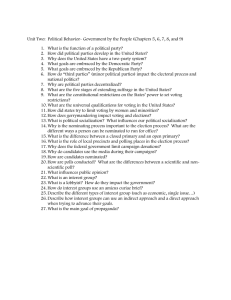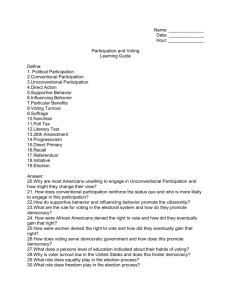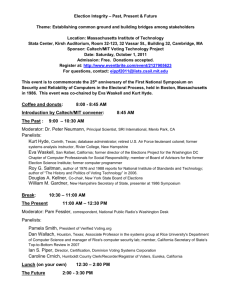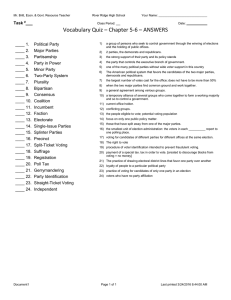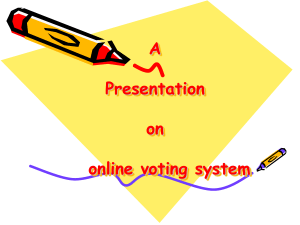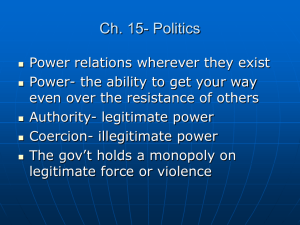The Caltech/MIT Voting Technology Project: Assessment of Voting Technology Professor Stephen Ansolabehere
advertisement
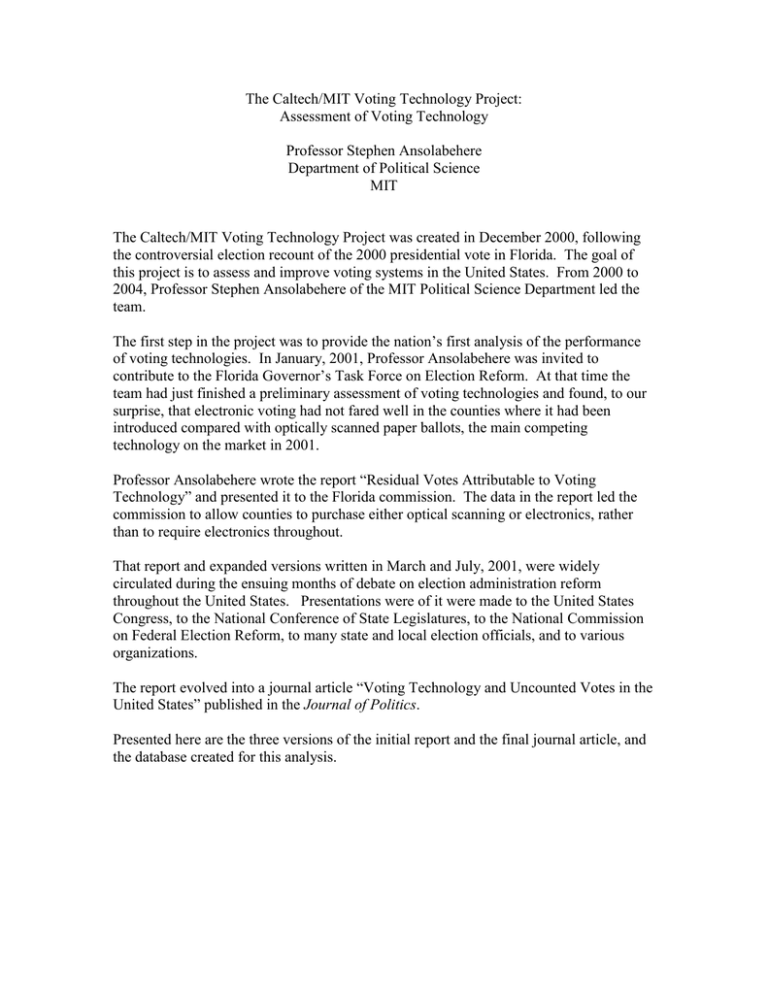
The Caltech/MIT Voting Technology Project: Assessment of Voting Technology Professor Stephen Ansolabehere Department of Political Science MIT The Caltech/MIT Voting Technology Project was created in December 2000, following the controversial election recount of the 2000 presidential vote in Florida. The goal of this project is to assess and improve voting systems in the United States. From 2000 to 2004, Professor Stephen Ansolabehere of the MIT Political Science Department led the team. The first step in the project was to provide the nation’s first analysis of the performance of voting technologies. In January, 2001, Professor Ansolabehere was invited to contribute to the Florida Governor’s Task Force on Election Reform. At that time the team had just finished a preliminary assessment of voting technologies and found, to our surprise, that electronic voting had not fared well in the counties where it had been introduced compared with optically scanned paper ballots, the main competing technology on the market in 2001. Professor Ansolabehere wrote the report “Residual Votes Attributable to Voting Technology” and presented it to the Florida commission. The data in the report led the commission to allow counties to purchase either optical scanning or electronics, rather than to require electronics throughout. That report and expanded versions written in March and July, 2001, were widely circulated during the ensuing months of debate on election administration reform throughout the United States. Presentations were of it were made to the United States Congress, to the National Conference of State Legislatures, to the National Commission on Federal Election Reform, to many state and local election officials, and to various organizations. The report evolved into a journal article “Voting Technology and Uncounted Votes in the United States” published in the Journal of Politics. Presented here are the three versions of the initial report and the final journal article, and the database created for this analysis.
